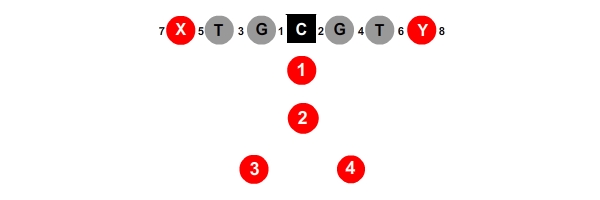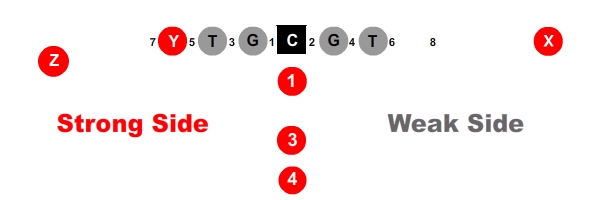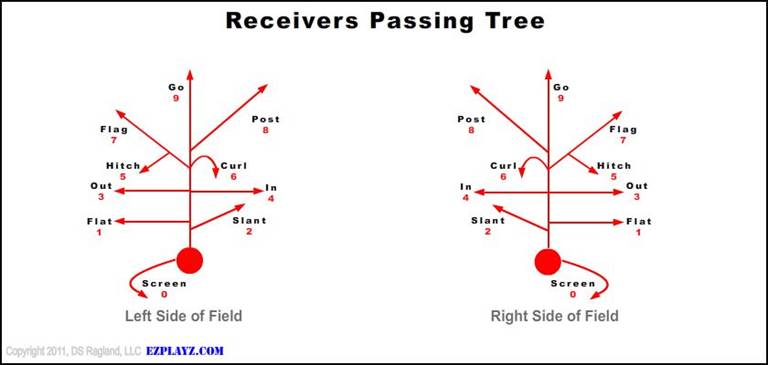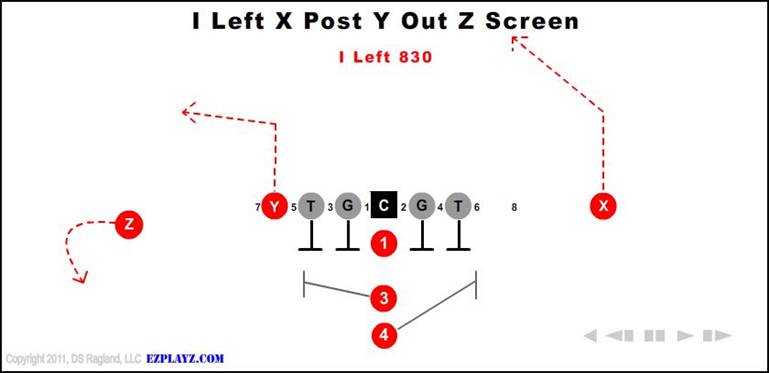EZPLAYZ Overview
Using EZPLAYZ is as simple as opening a PDF file. EZPLAYZ formations are saved in PDF portfolios which allow you to easily navigate through the entire formation. EZPLAYZ does require a minimum of Adobe Acrobat Reader 9.0 so, if needed, you can download a free version of Acrobat 9.0 at http://get.adobe.com/reader/ .
Using your EZPLAYZ Playbook
After downloading and saving your EZPLAYZ Playbook to your computer, open it and click the “Get Started” button to access the plays. Please note that by clicking the “Get Started” button, you agree to the End-User License Agreement and are bound by the terms and conditions contained therein.
All EZPAYZ Plays are stored within the PDF file and are easy to navigate with rotating folder views. Click on the formation folder you want and open that formation.
Now you can easily browse through the plays and select the one you want to view. Click the play you wish to view and it will open up in a new window.

Now that your play is open, simply click anywhere on the page to activate it and then click on the play button on the bottom right side to view the animated play. If this is a play you’d like to share with your coaches and your team, click the save button in the toolbar and select “Save File From Portfolio”
We suggest you create a folder on your computer(s) entitled “MY EZPLAYZ” as a location to save the plays you want to include in your teams playbook. From here you can easily e-mail and share the saved plays with your team.
EZPLAYZ Playbooks have the great feature of searching for plays in the portfolio. Simply type in a search term (e.g. “Sweep”) and a toolbar will pop-up on the right hand side with the results. You can then click the result you want to see and it will bring you to that play.
EZPLAYZ is EZ to Use, EZ to Share and EZ to Win.
EZPLAYZ is authorized to be used on two (2) separate computers and the sharing of plays is limited to one team’s coaching staff, players and the parents of players. Distribution of any kind beyond the team is strictly prohibited.
EZPLAYZ Receiver Designations
In a Balanced Formation (eg. Wishbone):
- X receiver is always on the left side of a balanced formation (typically a Tight End).
- Y receiver is always on the right side of a balanced formation (typically a Tight End).
Wishbone Formation
In a Strong Side/ Weak Side Formation* (eg. I Left)
- X receiver is the eligible receiver on the weak side of the formation.
- Y receiver is the inner eligible receiver on the strong side of the formation.
- Z receiver is the outside eligible receiver on the strong side of the formation.
I Left Formation
* For the understanding of your players, the strong side of the formation is the side on which there are more players. Conversely, the weak side is the side with fewer players. Make sure your players don’t get this confused with the wide side and short sides of the field.
EZPLAYZ Passing Routes (Passing Tree) and Play Naming
Receivers Passing Tree
Play Naming with Passing Routes
- EZPLAYZ utilizes two (2) play names for some passing plays. In this example, there is a long version (I LEFT X POST Y OUT Z SCREEN) to make sure that when the play is called, it is completely clear to the players; specifically those who are going out on the routes.
- The shorter version (I LEFT 830) is for the more experienced players. The numbering system always goes from Weak to Strong Side. In the example above, X-8; Y-3; Z-0
EZPLAYZ Blocking Schemes
EZPLAYZ offers three different blocking schemes:
- Zone Blocking
- Blocking Rules
- Pass Blocking
We have intentionally chosen not to put in detailed blocking assignments for a number of reasons:
- Quite simply there are just too many combinations of blocks and defenses the line may be encountering to cover them all. For example, if you were to cover all the blocking possibilities for a 7 man front against a 4 man D-Line, there are 840 possibilities of how that 7 man front can block!
- You have your own blocking rules that you want to implement in your strategy.
- Specific blocking schemes that I design as a coach are based on my talent and strategy which will both differ from yours. The last thing you need is a play that demonstrates something very specific which will not be applicable to your team.
Blocking Rules
Blocking rules are your rules that you want your kids to follow. Whether GOOLS (Gap-On-Outside-Linebacker-Safety) or some other standard blocking scheme or even your own, our Blocking Rules play format allows you a great deal of flexibility.
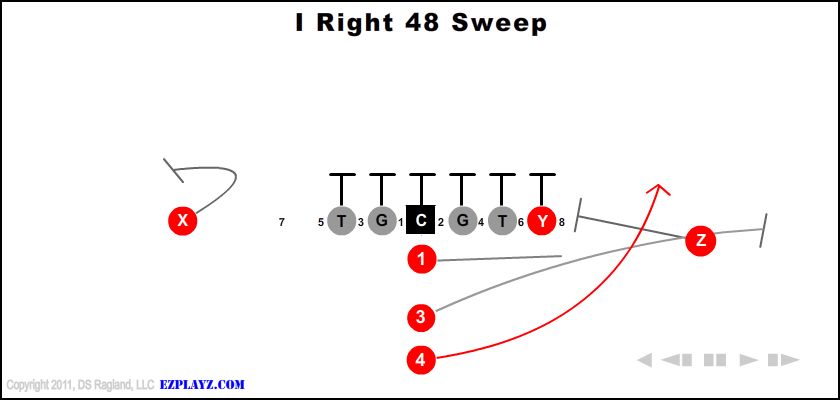 Blocking rules are your rules that you want your kids to follow. Whether GOOLS (Gap-On-Outside-Linebacker-Safety) or some other standard blocking scheme or even your own, our Blocking Rules play format allows you a great deal of flexibility.
Blocking rules are your rules that you want your kids to follow. Whether GOOLS (Gap-On-Outside-Linebacker-Safety) or some other standard blocking scheme or even your own, our Blocking Rules play format allows you a great deal of flexibility.
Zone Blocking
Zone Blocking is blocking towards the play side of where the play is going. I’ve had a lot of coaches argue with me over Zone Blocking. They say, “Why in the world would you want to block where the play is going?”, well I’ll tell you why, simple physics.
“Push the player in the direction they are already going!”
This is exactly what makes this an effective blocking scheme. It is much easier to push someone in the direction they are already moving, versus pushing them in the opposite direction. This also allows the opening up of running lanes for a quick footed running back to exploit as well as upfield blocking by your linemen in the second and third levels.
Blocking away from the play is effective only as long as you can hold your block, once you lose your block you are out of the play and the player you were blocking is free and clear to wreak havoc on your runner.
Zone blocking also allows you to better utilize a smaller line and still be effective. Let’s face it in youth football you can have mismatches of 140 pounds versus 80 pounds. If the 80 pounder is trying to push the 140 pounder in the opposite direction, he will lose that battle 99% of the time.






